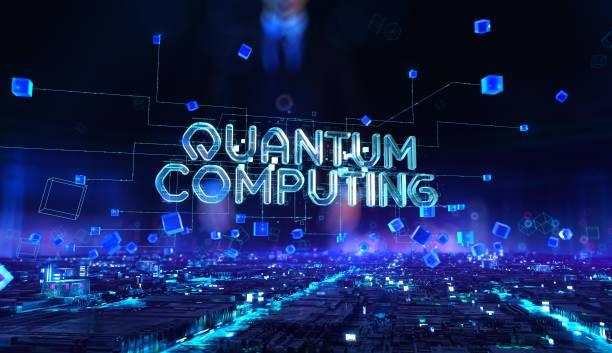
Quantum Computing from Algorithms to Realization
Since the invention of classical computation [1], it has been used in all aspects of our life, from Apollo moon landing missions to controlling toaster machines. Classical computing is based on using bits of 1’s and 0’s and is built on the theoretical framework of Turing machines. They used physical devices based on classical physical concepts giving a deterministic output bit using what are known as logic gates. Progress in computation followed two parallel paths; one for optimizing the computational algorithms [2], and the other focuses on enhancing the classical hardware by increasing the scale of integration, parallelism and speed of operation. Although a lot of achievement occurred in this classical methodology, a whole new approach was proposed in 1980s by Richard Feynman [3], where a quantum systems are proposed as a replacement of the classical devices. Instead of bits quantum bits or Qubits are the building blocks for quantum computations. Qubits are the quantum states which are processed by the quantum gates, which are quantum systems that manipulate qubits and produce new ones. Quantum algorithms were developed starting with the factoring algorithm by Peter Shor [4], and a lot more quantum algorithms in other applications [5]. This field is hindered by the difficulty of building and dealing with quantum devices.
In this proposed project we will work in two research tracks:
- Computer Algorithm: Develop quantum circuits and understand some algorithms [6] to solve different tasks such as algorithm to calculate Fast Fourier Transform FFT [7] with small number of steps compared to classical algorithm. The work on algorithms may involve implementation using quantum logic circuits.
- Physical Realization:
- Implementing the building block of a quantum circuit which is called a quantum bit, involves manipulating a physical system between its lowest quantum states, which is very difficult to build and operate, requiring a system at extremely low temperatures as a few kelvins. Among the possible realization is what is called TRANSMONS (Transmission Line Shunted Plasma Oscillation Qubit) [8]. We will study the theoretical simulations of those components and how to simulate simple quantum circuits using them.
- Another approach for realizing quantum circuits is the use of photonics [9], [10] which is challenged by the high level of optical coherence and extremely small power lasers required. We will try to survey this area as well.
Project Objectives
- Literature Review: The scope of this part is to review both the quantum algorithms and gates and how to think in terms of the quantum computing language. Another part of the review will cover the physical parts, where the hardware implementation of the quantum system using superconducting transmission line shunted plasma oscillation qubits TRNSMONS and quantum photonics.
- Understand Quantum Algorithms and Implement in Quantum Circuits: In this part we are going to understand a quantum algorithm for some application. We will also build the abstract quantum circuits for implementation from the basic quantum gates (such as CNOT, Controlled Z, and Toffoli gates) to perform a quantum processing chosen task.
- Hardware Design and simulation: This work package covers design and simulation of a simple quantum hardware that contains a few qubits to be build using superconducting transmission line shunted plasma oscillation qubits TRNSMONS and interaction of the different parts and how read out (measure) output.
- Quantum Photonics: We will try to investigate the possibility of designing a simple quantum processor using phonics.
